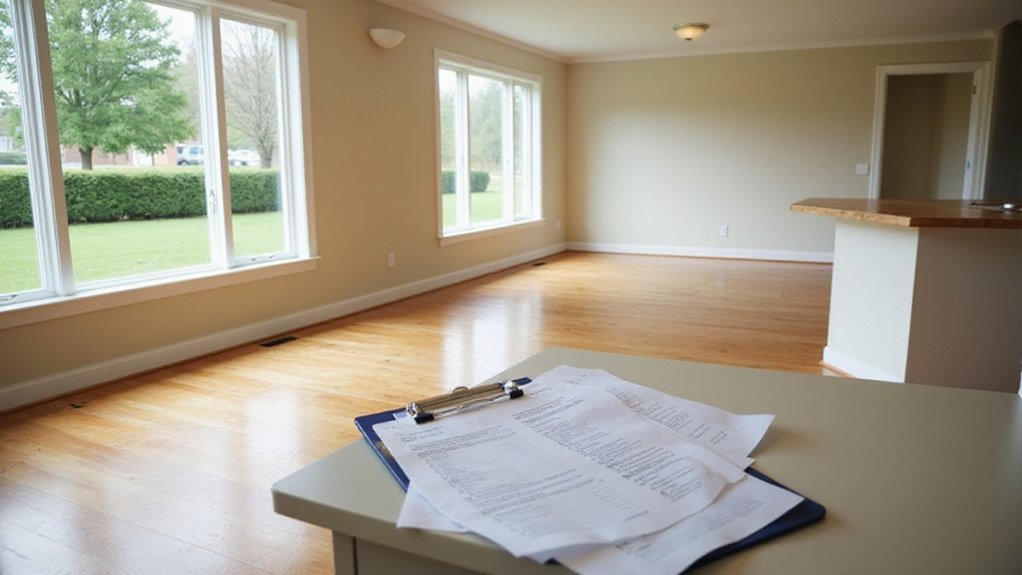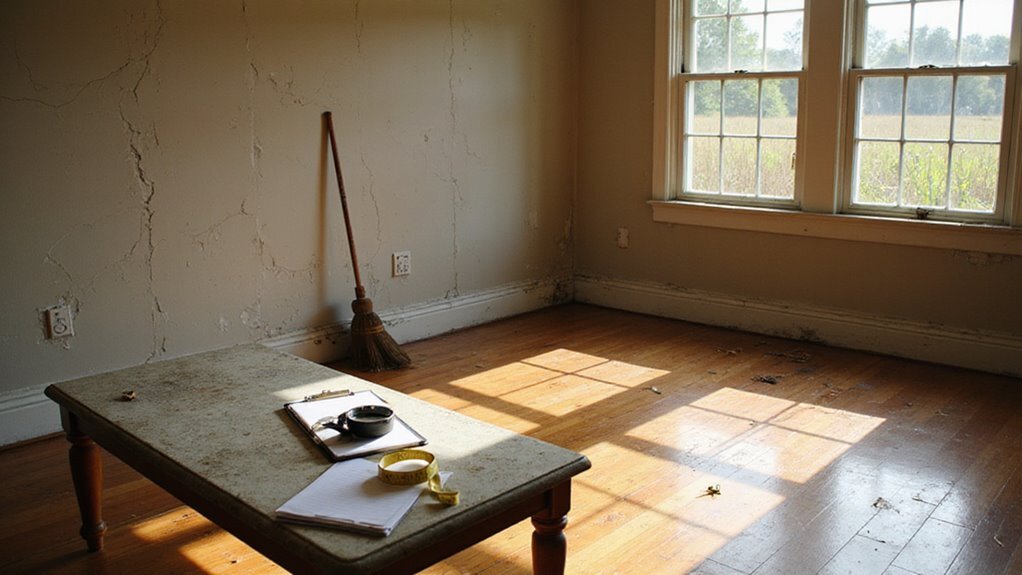Selling a foreclosure property can be a daunting task filled with unexpected challenges and hidden hurdles. Many owners struggle with legal issues, property conditions, and market uncertainties. It’s easy to feel overwhelmed by the complexities. Without proper steps, you risk delays or financial loss.
The pressure mounts when you realize one wrong move could cost you dearly. Legal tangles, repair surprises, or pricing errors can derail your plans. Time slips away, and stress builds fast. You might even face buyer distrust or low offers. But don’t worry, there’s a clear path to success if you prepare well.
Follow these key steps before listing a foreclosure property to ensure a smooth sale. With the right approach, you can avoid pitfalls. This guide offers practical tips to help you succeed. This blog will walk you through essential steps to solve your foreclosure listing challenges effectively.
Key Takeaways
- Conduct a detailed title review to identify hidden liens or legal issues.
- Assess property condition for structural integrity and necessary repairs.
- Research foreclosure history to uncover past issues or disputes.
- Consult an attorney to understand local foreclosure laws and regulations.
- Perform market research to price the property competitively before listing.
What are the key steps before listing a foreclosure property?

As you prepare to list a foreclosure property, you must tackle several critical steps to ensure a smooth process. Start by focusing on due diligence, understanding the foreclosure process, addressing financial preparation, handling legal considerations, and planning your marketing and listing strategy. These elements are essential, and you can’t afford to overlook any of them if you aim for success. Additionally, consider reaching out to investment companies that offer fast cash offers for properties in foreclosure to potentially expedite the selling process.
1. Due Diligence
Before listing a foreclosure property, you must conduct thorough due diligence to avoid possible pitfalls. Start by performing a detailed title review to ensure there are no hidden liens or legal issues, then assess the property’s condition to identify any repairs or hazards that could impact its value. Finally, evaluate the neighborhood to confirm market trends and comparable sales, as this will guide your pricing strategy.
Title Review
A thorough title review is essential when listing a foreclosure property. It helps identify issues during due diligence. Always investigate every detail to avoid potential risks. If old claims exist, they might cloud ownership. Uncover these problems early to prevent complications.
Ensure the title is clear before listing the property. Resolve any liens or disputes as soon as possible. If issues remain, they could lead to legal troubles later. Protecting yourself now saves future headaches. Take this step seriously for peace of mind.
Property Condition
Assessing the property condition is vital before listing a foreclosure home. It helps determine the home’s value and appeal. Inspect the architectural style for structural strength and visual charm. Check the landscape design to ensure it looks neat. If repairs are needed, identify them early to improve marketability. Updates might also be necessary to attract potential buyers.
Neighborhood Assessment
Evaluating the neighborhood around a foreclosure property is crucial for due diligence. Look at traffic patterns to gauge accessibility and noise. If traffic is heavy, it might deter potential buyers. Check school ratings since they impact family choices. If schools are good, the property gains appeal. A detailed neighborhood review helps ensure transparency and market value.
2. Understanding the Foreclosure Process
The foreclosure process starts when a homeowner misses mortgage payments. The lender then sends a notice of default. This begins a timeline, often lasting months, for the owner to save the property. If they fail, the lender may hold a public auction. Alternatively, the lender could take ownership via a deed in lieu.
Research the property’s foreclosure history to spot past issues or liens. These might create problems when listing the home. Also, consider the credit impact on the previous owner. If their credit is poor, it could affect negotiations. Equip yourself with this info to handle the process well.
3. Financial Preparation
As, before you list that foreclosure property, let’s tackle your financial preparation with a sharp focus on securing financing and estimating repair costs. Make sure you’ve got a clear plan to fund the purchase or any immediate expenses, as lenders often have strict requirements for foreclosure deals. Don’t overlook a detailed assessment of repair costs either—knowing these numbers upfront ensures you’re not caught off guard by unexpected expenses.
Financing
Financial preparation is key before listing a foreclosure property for sale. You must ensure a smooth transaction process. Explore seller financing to offer buyers flexible payment options. Bridge loans can help cover urgent costs if needed. Always assess your financial situation carefully. If issues arise, be ready to handle them confidently. This prevents delays or surprises during the sale.
Repair Costs
Repair costs are crucial when listing a foreclosure property. Don’t ignore them or believe myths that minimize expenses. Assess all damages carefully to understand the true scope. If you skip this, your sale might face delays. Research current cost trends to create a realistic budget. Prioritize key fixes to improve the property’s appeal. Allocate funds wisely for critical issues before listing. If neglected, these costs could harm your sale’s success.
4. Legal Considerations
As you prepare to list a foreclosure property, you must address critical legal considerations to avoid possible pitfalls. Ensure you’re aware of trespassing laws, as unauthorized access to the property can lead to serious legal consequences. Seek professional legal advice to navigate the complex regulations surrounding foreclosures and protect your interests.
Trespassing
You can secure all entry points with strong locks. Install clear warning signs to keep intruders away. Regularly check the property for any issues. If possible, use security cameras to monitor the area.
Hiring a local patrol might help if risks are high. Don’t let trespassers harm your property. Act quickly to ensure safety. If you delay, problems could grow worse.
Legal Advice
Before listing a foreclosure property, consider key legal aspects to stay compliant. These essentials can protect your process. If you overlook them, issues may arise.
Consult a qualified attorney for guidance. Understand local foreclosure laws to avoid mistakes. Follow legal ethics when making disclosures. Stick to proper court procedures during the process. Verify ownership and liens to ensure clarity.
If you ignore these steps, your sale could face risks. Act wisely to secure a smooth transaction.
5. Marketing and Listing
As you move into marketing and listing a foreclosure property, start by conducting thorough market research to understand local trends and set a competitive price. Develop a sharp listing strategy that includes professional photography and clear, detailed descriptions to attract serious buyers. Ensure you’ve got a strong online presence to maximize visibility and reach potential investors or homeowners quickly.
Market Research
Market research helps you price the property correctly and draw in potential buyers. It gives you a clear picture of the market. If you skip this step, you might misprice or miss opportunities.
How can you gather useful data?
Start by exploring global real estate trends. Look at consumer behavior to understand buying patterns. Check local pricing standards for accurate benchmarks. Analyze competitor properties to see their strengths. Monitor demand changes in your area. If data is thorough, your strategy will improve.
With this knowledge, you can position your foreclosure property for success.
Listing Strategy
To make your foreclosure property stand out, price it correctly and showcase its special features. A good price attracts buyers quickly. Highlighting unique aspects can create strong interest in a competitive market. If delays happen, have a backup plan ready to keep things moving.
Always target the right buyers for faster results. Craft a clear and engaging listing to grab attention. If challenges arise, act fast to solve them. A solid strategy helps close the deal swiftly.
Professional Photography
Want to make a foreclosure property shine in a busy market? Professional photography can captivate potential buyers instantly. If you hire skilled photographers, your property will stand out. Experts can showcase the home’s best qualities. Their images will draw attention quickly.
Here are key tips to follow. Highlight the property’s unique features clearly. Use natural light to brighten spaces. Stage rooms to look inviting and neat. Capture creative angles for a fresh view. Edit photos carefully for a polished look. If you apply these steps, buyers will notice your listing. Your property could sell faster!
Clear Descriptions
Crafting clear descriptions for a foreclosure property is vital. Highlight key features with simple, precise words. If you describe well, buyers will notice your listing. Ensure the property’s condition is explained honestly. Unique aspects must stand out clearly.
Be straightforward when detailing the home’s state. Use a step-by-step approach for clarity. If a feature is special, mention it directly. Trust builds when every word is accurate. Your listing can excel in a competitive market.
Online Presence
A strong online presence can help your foreclosure property get noticed. Don’t settle for a weak listing. If you strategize well, visibility will improve.
- Keep your website fast and clear for easy access.
- Upload clear, high-quality photos of the property.
- Use social analytics to find the right buyers.
- Stay active on social media for better reach.
- If outdated, update listings to ensure correct details.
Conclusion
As you finalize your foreclosure property for listing, ensure every detail is addressed. If you’ve completed due diligence and legal steps, you’re on track. A strong marketing plan can attract many potential buyers.
Should you seek a faster sale, consider options like selling to cash buyers. We buy houses for cash, offering a quick and hassle-free process. This could save time and reduce stress during the sale.
If you’re ready to move forward, we at Limitless Homes of KC are here to help. Contact us today for a smooth and efficient transaction.

